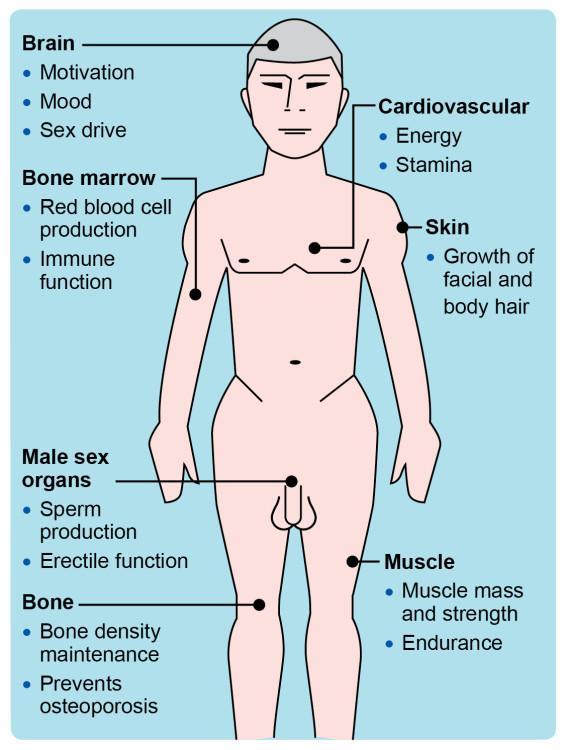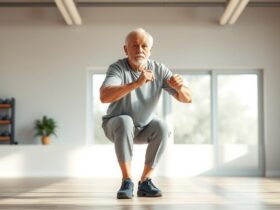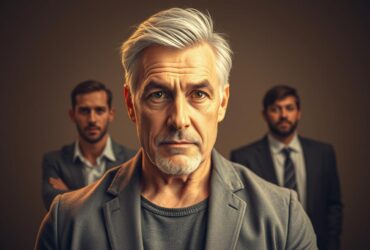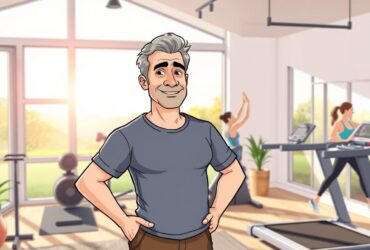As the sands of time trickle through the hourglass, aging brings with it a tapestry of changes that can redefine not only the physical form but also the emotional and mental landscape of life. Among these transformations, the decline in testosterone levels for men over the age of 60 is a particularly nuanced and often misunderstood phenomenon. While society often emphasizes the vitality and vigor of youth, many are unaware that testosterone plays a crucial role in maintaining energy, mood, and overall health in later years. The advent of testosterone therapy has emerged as a potential beacon of hope for those grappling with the effects of aging, promising to restore balance and enhance quality of life. In this article, we will explore the intricacies of testosterone therapy after 60, delving into its benefits, risks, and the critical considerations that come into play as we navigate this complex but vital aspect of adult health.
Understanding Testosterone Decline in Aging Men
The phenomenon of testosterone decline in aging men is a significant aspect of men’s health that often goes unnoticed. Testosterone, a critical hormone responsible for various bodily functions, tends to decrease gradually after the age of 30, with levels typically dropping by about 1% per year. This natural decline can lead to a range of symptoms, including decreased libido, fatigue, mood changes, and reduced muscle mass. Understanding these changes is crucial for men as they age, as they can impact physical health, mental well-being, and overall quality of life.
Men contemplating testosterone therapy should consider its potential benefits and risks, particularly after the age of 60. Here are some factors to keep in mind:
- Symptom Relief: Therapy may alleviate symptoms like fatigue and reduced libido.
- Bone Density: It can help maintain or increase bone density, assisting in osteoporosis prevention.
- Muscle Mass: Testosterone therapy may support muscle strength and body composition.
- Cardiovascular Health: Some studies suggest a possible link between testosterone and heart health, although research is ongoing.
It’s essential for individuals to undergo thorough evaluations and discuss potential treatment plans with their healthcare providers. Below is a simple comparison of the potential benefits versus risks associated with testosterone therapy:
| Benefits | Risks |
|---|---|
| Improved mood and energy levels | Potential increase in red blood cell count |
| Enhanced sexual desire and performance | Risk of sleep apnea |
| Increased muscle strength | Possible cardiovascular issues |
| Better bone density | Prostate health concerns |

Evaluating the Necessity of Testosterone Therapy
As men age, particularly after reaching the milestone of 60, the natural decline in testosterone levels can lead to a plethora of symptoms that may significantly impact quality of life. It’s crucial to evaluate the necessity of testosterone therapy through a meticulous assessment of individual circumstances. Considerations should include a comprehensive understanding of symptoms such as fatigue, decreased libido, mood changes, and muscle mass reduction. Moreover, an informed decision should not rely solely on hormonal levels but should incorporate a holistic view of health, lifestyle factors, and the presence of comorbidities that could influence overall wellness.
Before embarking on testosterone therapy, it is advisable to engage in discussions with healthcare providers who specialize in hormone replacement treatment. Key factors to explore include:
- Current health conditions: Assessing any underlying issues such as cardiovascular disease or prostate health.
- Symptom evaluation: Documenting the impact of symptoms on daily life and mental health.
- Alternative treatments: Exploring lifestyle changes, nutritional support, or natural supplements that could alleviate symptoms without hormone therapy.
Ultimately, testosterone therapy should be viewed as a potential solution rather than a one-size-fits-all remedy, requiring thoughtful consideration and individualized planning.

Potential Benefits of Testosterone Replacement
Testosterone replacement therapy can offer a myriad of advantages for men over 60, particularly in enhancing overall quality of life. As testosterone levels decline naturally with age, many individuals experience a range of physical and emotional changes. By engaging in testosterone therapy, men may see improvements in the following areas:
- Increased Energy Levels: A notable boost in vitality can lead to enhanced participation in daily activities and a more active lifestyle.
- Improved Mood: Many report a reduction in symptoms of depression and anxiety, promoting a more positive outlook on life.
- Enhanced Muscle Mass: Therapy can help counteract age-related muscle loss, contributing to greater strength and mobility.
- Better Cognitive Function: Some studies suggest a link between testosterone levels and improved memory and cognitive health.
Additionally, testosterone replacement may positively impact sexual health, an aspect often diminished with age. Restoring hormone levels can result in:
- Increased Libido: Many men have experienced a resurgence in sexual desire, offering a revitalized intimacy with partners.
- Improved Erectile Function: Therapy can help facilitate better erections, enhancing overall sexual satisfaction.
- Greater Confidence: With improved sexual health often comes a boost in self-esteem and confidence.

Exploring the Risks and Side Effects
While testosterone therapy can offer numerous benefits to older adults, it is essential to recognize the potential risks and side effects associated with the treatment. Some individuals may experience mood swings, acne, or an increase in hair growth in unusual places, which can be distressing. Moreover, testosterone therapy can lead to serious health concerns, such as an elevated risk of cardiovascular problems. Research indicates that some men undergoing therapy may face an increased likelihood of heart attacks or strokes, particularly if they have pre-existing conditions or are on high doses.
In addition to cardiovascular issues, testosterone therapy can also affect the prostate gland. Prostate enlargement is a common concern, potentially leading to urinary problems. While the connection between testosterone and prostate cancer is still under investigation, many healthcare professionals recommend regular screenings for men on therapy. Furthermore, individuals may experience changes in mood or behavior, such as increased aggression or irritability, making it crucial to monitor emotional health throughout treatment. Understanding these risks can help individuals to make informed decisions in consultation with their healthcare providers.
Choosing the Right Type of Testosterone Therapy
When considering testosterone therapy, it’s essential to evaluate the various options available and determine which best suits your individual health profile and lifestyle. Various forms of testosterone therapy exist, including injections, patches, gels, and pellets. Each method has distinct advantages and disadvantages, which can influence both the efficacy and convenience of treatment. For instance, injections typically offer fast absorption and effectiveness, while gels and patches provide a more consistent release of testosterone and might be easier to administer at home. Patients must weigh these factors carefully as part of their decision-making process.
Furthermore, it’s crucial to have thorough discussions with a healthcare provider about potential side effects and monitoring strategies necessary for each therapy type. The following table outlines some key considerations regarding each testosterone therapy method:
| Therapy Type | Administration | Frequency | Considerations |
|---|---|---|---|
| Injections | Intramuscular | Every 1-3 weeks | Fast-acting, may cause fluctuations |
| Patches | Topical | Daily | Easy to apply, skin irritation possible |
| Gels | Topical | Daily | Consistent absorption, risk of transfer |
| Pellets | Subcutaneous | Every 3-6 months | Long-lasting, requires minor surgery |
Ultimately, both personal preference and medical advice will guide you in making an informed choice about testosterone therapy. It’s essential to consider how each option aligns with your lifestyle and health needs, ensuring the right balance between efficacy and comfort in your therapy journey.
Integrating Lifestyle Changes Alongside Treatment
As men age, particularly after 60, integrating lifestyle changes becomes essential when considering testosterone therapy. An effective approach can significantly enhance the benefits of treatment, resulting in improved energy levels, mood stabilization, and overall well-being. Key lifestyle adjustments include:
- Balanced Nutrition: Consuming a diet rich in whole foods, proteins, healthy fats, and antioxidants supports hormonal balance.
- Regular Exercise: Incorporating a mix of strength training and aerobic activities can increase testosterone levels naturally and improve physical health.
- Sufficient Sleep: Prioritizing quality sleep helps regulate hormones and enhance the body’s recovery processes.
- Stress Management: Engaging in mindfulness, meditation, or yoga can improve mental health and mitigate stress-induced hormonal fluctuations.
When combined with testosterone therapy, these lifestyle changes can lead to a more holistic approach to health. Setting achievable goals and tracking progress can foster motivation and ensure sustainability. For example, here’s a simple table to help track essential lifestyle factors:
| Factor | Target | Current Status |
|---|---|---|
| Weekly Exercise (Hours) | 3-5 | [Your Status] |
| Fruit/Vegetable Servings | 5-7 | [Your Status] |
| Sleep (Hours) | 7-9 | [Your Status] |
By actively engaging with these lifestyle alterations, individuals can optimize their treatment regimen, paving the way for sustained vitality and improved health outcomes in later life.
Monitoring and Adjusting Therapy for Optimal Results
Regular monitoring is essential for those undergoing testosterone therapy after the age of 60. This helps in assessing the body’s response and making necessary adjustments to ensure the therapy remains effective. Key parameters to evaluate include:
- Hormone Levels: Tracking testosterone levels through blood tests every few months to evaluate efficacy.
- Side Effects: Observing any side effects like mood swings, irritability, or changes in libido.
- Physical Health: Monitoring improvements in muscle mass, energy levels, and overall vitality.
Adjustments to the therapy may include modifying dosage, changing the delivery method (e.g., injections vs. gels), or incorporating additional lifestyle changes such as exercise and diet. It’s also critical to engage in open communication with healthcare providers to optimize treatment plans based on individual needs. A sample of a monitoring schedule might look like this:
| Monitoring Aspect | Frequency |
|---|---|
| Testosterone Levels | Every 3 months |
| Overall Health Assessment | Every 6 months |
| Review of Side Effects | As needed |
Q&A
Q&A: Testosterone Therapy After 60
Q: What is testosterone therapy, and why is it considered for individuals over 60?
A: Testosterone therapy involves the administration of testosterone to boost levels in men experiencing deficiency. For those over 60, declining testosterone levels can lead to symptoms such as decreased libido, fatigue, and muscle loss. This therapy aims to alleviate these symptoms and enhance overall quality of life.
Q: How do I know if I need testosterone therapy?
A: Symptoms of low testosterone may include reduced energy, difficulty concentrating, mood changes, and decreased physical prowess. A healthcare provider can assess your testosterone levels through blood tests and evaluate your symptoms before recommending therapy.
Q: What are the potential benefits of testosterone therapy for older adults?
A: Benefits may include improved energy levels, enhanced libido, increased muscle mass, and better bone density. Some studies suggest it can also improve mood and cognitive functions, offering a holistic enhancement to well-being.
Q: Are there risks associated with testosterone therapy, particularly for those over 60?
A: Yes, there are risks that need careful consideration. Potential side effects include increased risk of heart disease, sleep apnea, and prostate issues. It’s crucial for individuals to have thorough discussions with their healthcare provider to weigh benefits against possible risks.
Q: How is testosterone therapy administered?
A: Testosterone can be administered through various methods, such as injections, patches, gels, or pellets inserted under the skin. The choice of method often depends on personal preference, lifestyle, and medical advice.
Q: Is testosterone therapy suitable for everyone over 60?
A: Not necessarily. Individuals with certain health conditions, such as prostate cancer or heart disease, may be advised against it. A comprehensive medical evaluation is essential to determine eligibility and ensure safety.
Q: How long does it take to see results from testosterone therapy?
A: Patients may start noticing improvements within a few weeks, but it can take several months to experience the full benefits. Regular follow-ups with a healthcare provider are important to monitor progress and adjust treatment as needed.
Q: What lifestyle changes can complement testosterone therapy for older adults?
A: Incorporating regular exercise, maintaining a balanced diet, managing stress, and ensuring adequate sleep can significantly enhance the effectiveness of testosterone therapy. A holistic approach to health is key to overall well-being.
Q: Are there any alternatives to testosterone therapy for managing low testosterone symptoms?
A: Yes, alternatives may include lifestyle modifications, herbal supplements, or other medications that address specific symptoms. Consulting with a healthcare provider can help identify the most suitable options tailored to individual needs.
Q: How should one approach the decision to start testosterone therapy?
A: Start by having an open and honest discussion with your healthcare provider. Discuss symptoms, potential benefits, and risks, and consider getting a second opinion if you feel uncertain. Making an informed decision is essential for achieving your health goals.
Q: What’s the takeaway for older adults considering testosterone therapy?
A: Testosterone therapy can be beneficial for some older adults with low testosterone levels. However, it’s vital to approach it thoughtfully, taking into account both the potential advantages and the risks. Personal health needs and professional guidance should always be at the forefront of the decision-making process.
Key Takeaways
navigating the landscape of testosterone therapy after 60 can be both enlightening and complex. As research continues to evolve, it’s becoming increasingly clear that testosterone is not merely a marker of virility, but a vital component of overall health and well-being. For those considering this path, the key lies in understanding the benefits and potential risks, prioritizing informed discussions with healthcare professionals, and embracing a holistic approach to health that encompasses lifestyle, nutrition, and mental wellness.
Ultimately, the decision to pursue testosterone therapy should be as unique as each individual, tailored to one’s personal health goals and circumstances. Whether it’s rekindling vitality or managing age-related challenges, the journey ahead can lead to greater self-awareness and improved quality of life. As we age, let us continue to seek knowledge, foster support, and celebrate the vibrant potential that lies beyond the decades.










